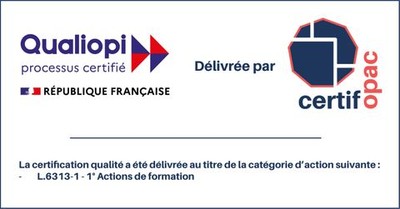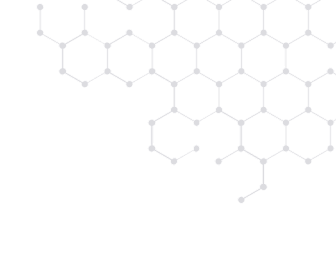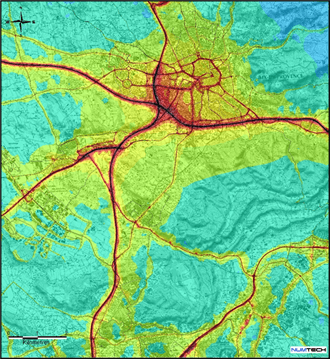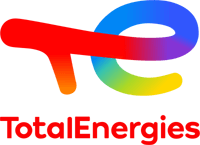Tool dedicated to the dispersion of traffic-related pollutants
Download the factsheet
to change
The ADMS suite consists of atmospheric dispersion modeling software designed to assess the impact of various emission sources on air quality and public health.
These advanced, Gaussian-type models cover a wide range of situations to deliver reliable, detailed results.

Developed by CERC since 1994 and distributed by NUMTECH since 2003 in France and French-speaking countries, ADMS software represents the state of the art in Gaussian dispersion models.
Used internationally, they are recognized by many national authorities for their accuracy and effectiveness.
ADMS software provides a user-friendly GUI (fully in French) and the built-in Mapgen visualizer for standalone use. A Geographic Information System is not required.
For users already working with GIS, ADMS file import/export is optimized via shapefile formats for smooth integration.
Input data collection is simplified with our DAD offering to provide meteorological and topographic data, ready to be used in models.

NUMTECH services

Perpetual purchase or rental from a few months to several years.

Two days to master the tool, delivered by our engineers on-site or remotely.
2025 Training Catalogue
Available for temporary computing power needs.

On-demand support to help junior engineers or review your modeling.

To ensure access to the latest updates and resolve issues quickly.
For complex needs, our team is also available to carry out your studies
or help configure your simulations.
Since 2000, NUMTECH has been training engineers and technicians in the use of atmospheric dispersion models, in particular the ADMS software suite. To address increasingly complex impact studies driven by the evolving regulatory context, NUMTECH continually upgrades its modelling tools and expertise. The 2025 training catalogue includes a course on the latest version of the ADMS software dedicated to industrial dispersion studies: ADMS 6. We also continue to offer general courses on atmospheric dispersion modelling and on modelling for the “Air & Health” sections of impact assessments.
Objectives: Learn to use ADMS 6 for atmospheric dispersion studies: understand and convert input data (meteorology, topography, emissions), run simulations, visualize results, and use the core ADMS 6 options required for chronic impact studies.
Audience: Beginner or intermediate users. Open to consulting firms, industrial companies, organizations, associations, and public authorities.
Minimum required level: Engineers or technicians new to dispersion modeling.
Objectives: Master advanced features and specific modules of ADMS 6. Be able to position ADMS 6 (and justify its selection) among the different families of dispersion models, and assess model sensitivity and uncertainties.
Audience:Users wishing to advance their ADMS 6 practice, master the advanced modules, and understand the tool’s limits and strengths.
Minimum required level: Engineers already familiar with ADMS 6.
Objectives: Learn to use ADMS-Roads for studies on the impact of road traffic ("Air & Health" section): understand and convert input data (meteorology, topography, emissions), run simulations, visualize results, and use the main options of ADMS-Roads.
Audience:Open to engineering consultancies, local authorities, and CEREMA (French public agency for risks, environment, mobility and planning).
Minimum required level: Engineers working in air pollution and impact assessments ("Air & Health" section).
Objectives: Learn to use ADMS-Urban for studies on urban air quality or the impact of complex road networks: understand and convert input data (meteorology, topography, emissions), run simulations, visualize results, and use the main options of ADMS-Urban.
Audience:Open to Air Quality Monitoring Associations (AASQA), local authorities, and CEREMA.
Minimum required level: Engineers already working in the field of air quality and air pollution.


adms range

Tool dedicated to the dispersion of traffic-related pollutants
Download the factsheet
Specialized tool for modeling emissions and air quality at airports
Download the factsheet
Flexible, recognized model for simulating atmospheric dispersion in all situations
Download the factsheet
High-resolution model for air quality at the scale of a city or neighborhood
Download the factsheet

Specialized tool for modeling emissions and air quality at airports

Flexible, recognized model for simulating atmospheric dispersion in all situations

High-resolution model for air quality at the scale of a city or neighborhood
adms range
ADMS6 is the reference tool for assessing industrial impacts and risks. It is perfectly suited to dispersion calculations as part of Health Risk Assessments (HRA).



ADMS RANGE


ADMS-Roads is dispersion software specifically designed to assess the impact of road-traffic emissions on air quality, whatever the infrastructure.
Applications:
ADMS-Roads is particularly suited to the "Air & Health" components of infrastructure projects
ADMS RANGE

ADMS-Urban is a comprehensive platform dedicated to computing atmospheric pollutant concentrations at urban scale. It takes into account all source types and the most significant complex effects.
Applications:

ADMS RANGE
ADMS-Airport is the ideal tool for managing air quality within airport areas.



























F. A. Q

|
|
|